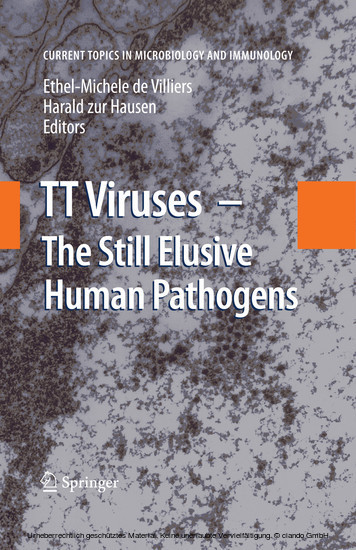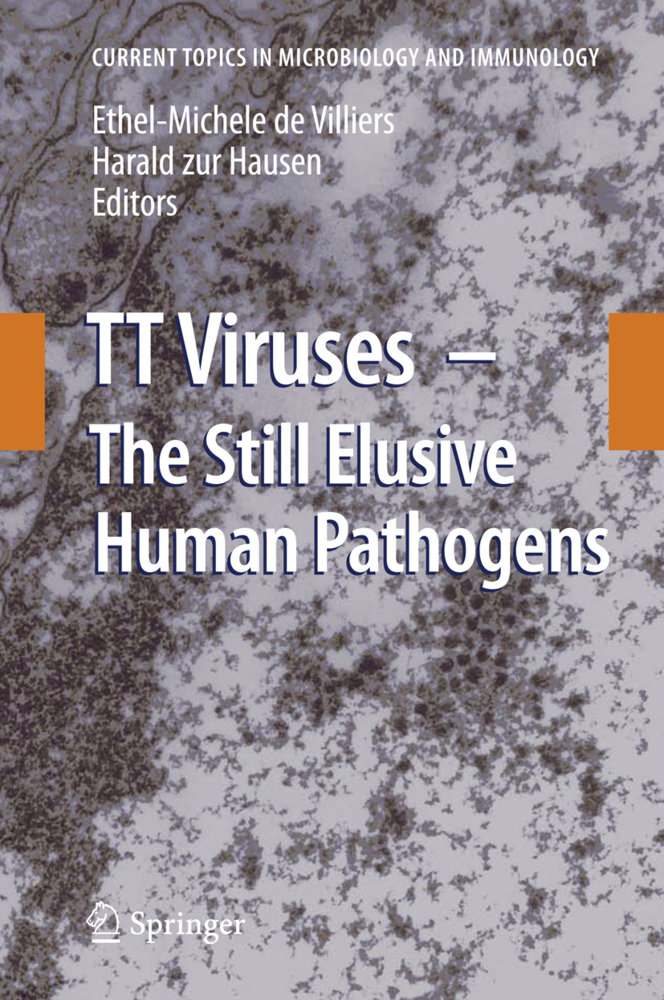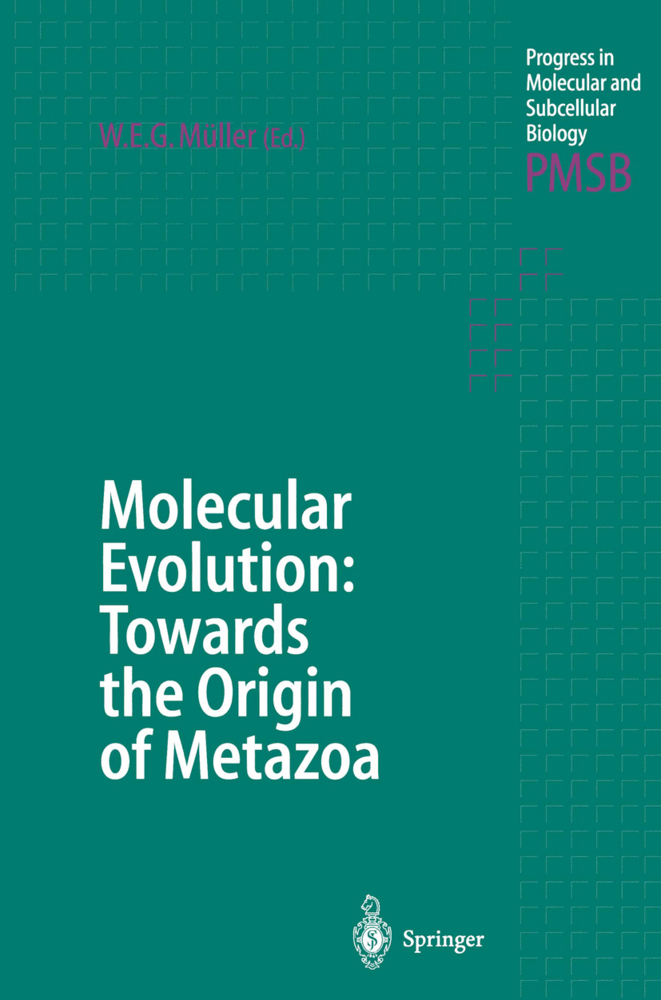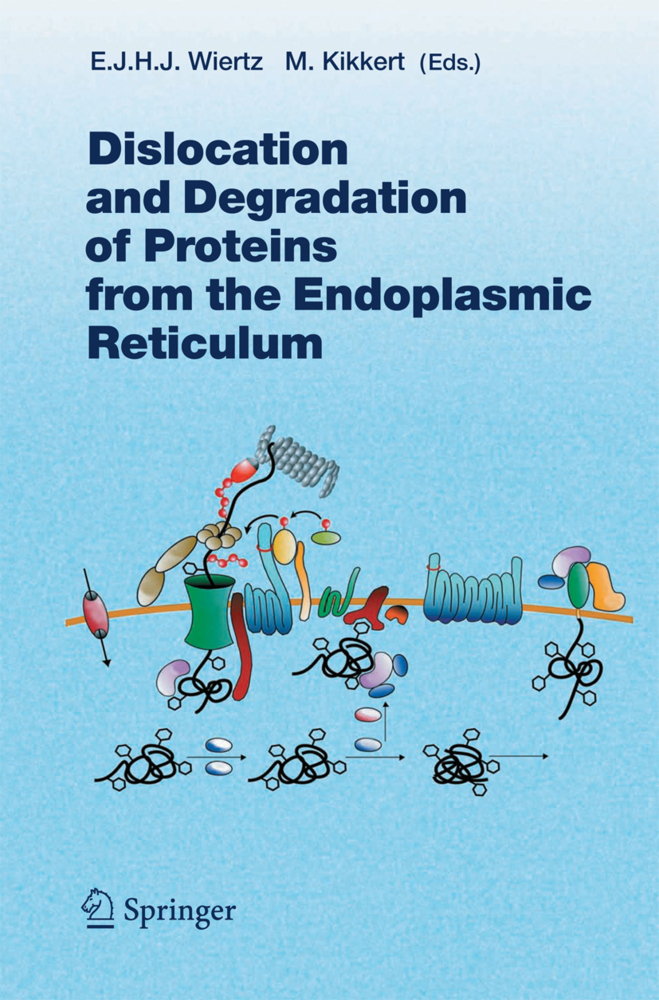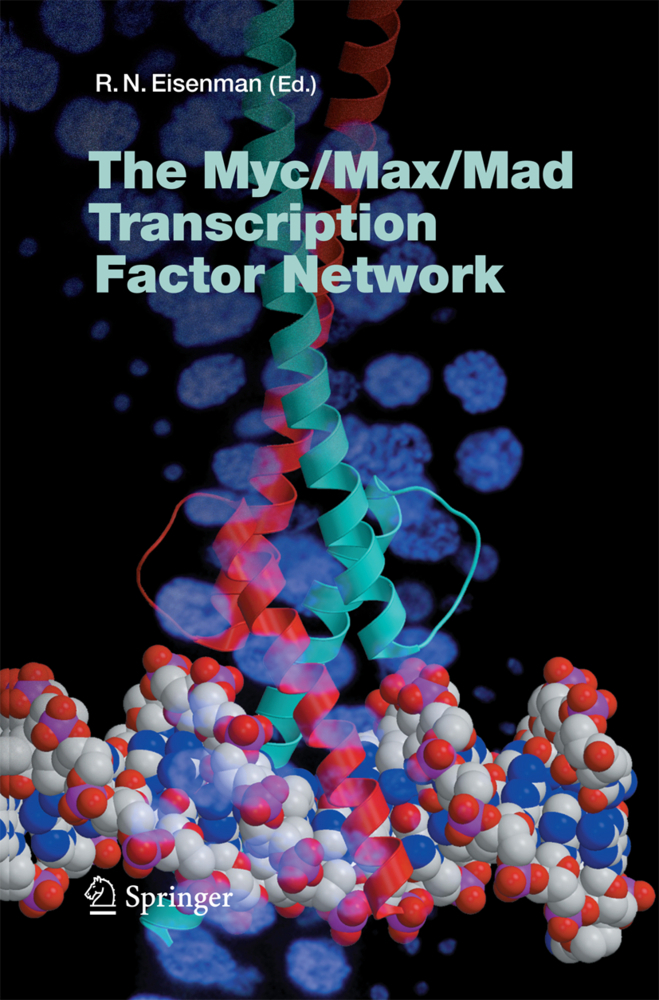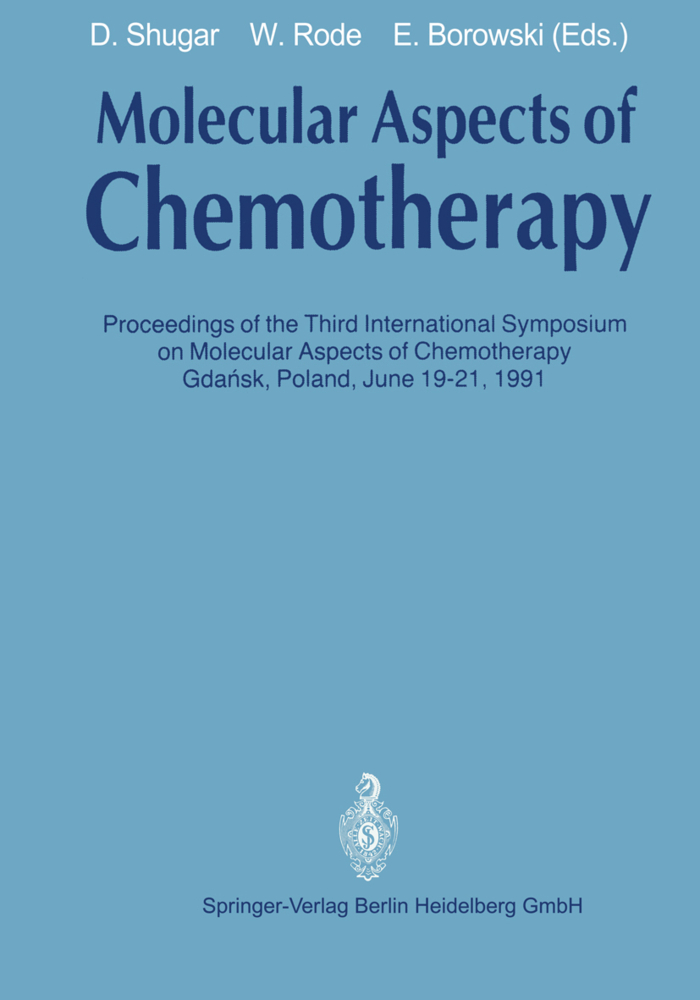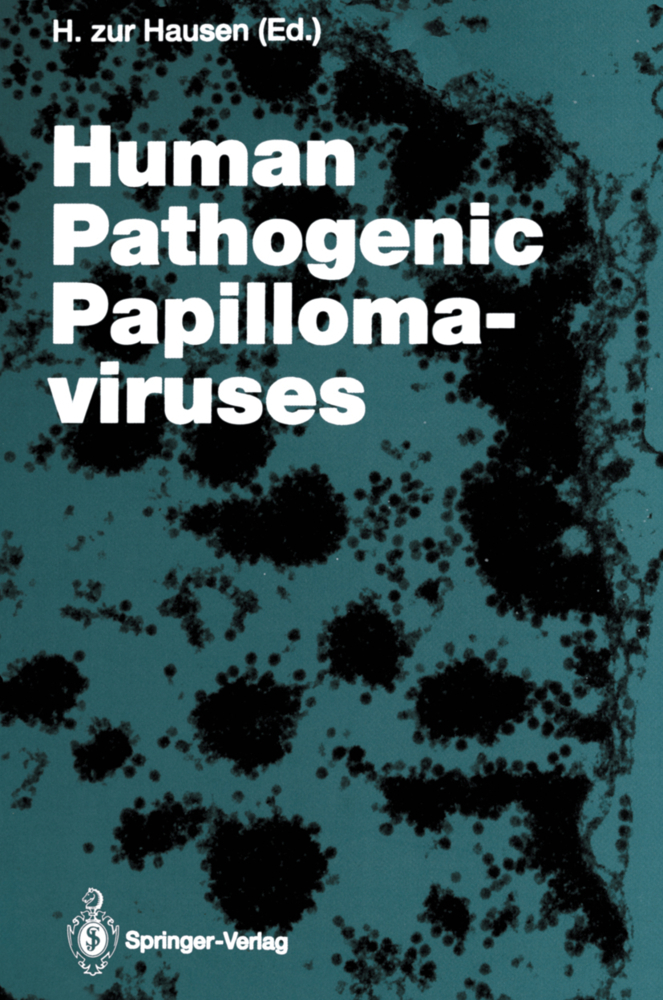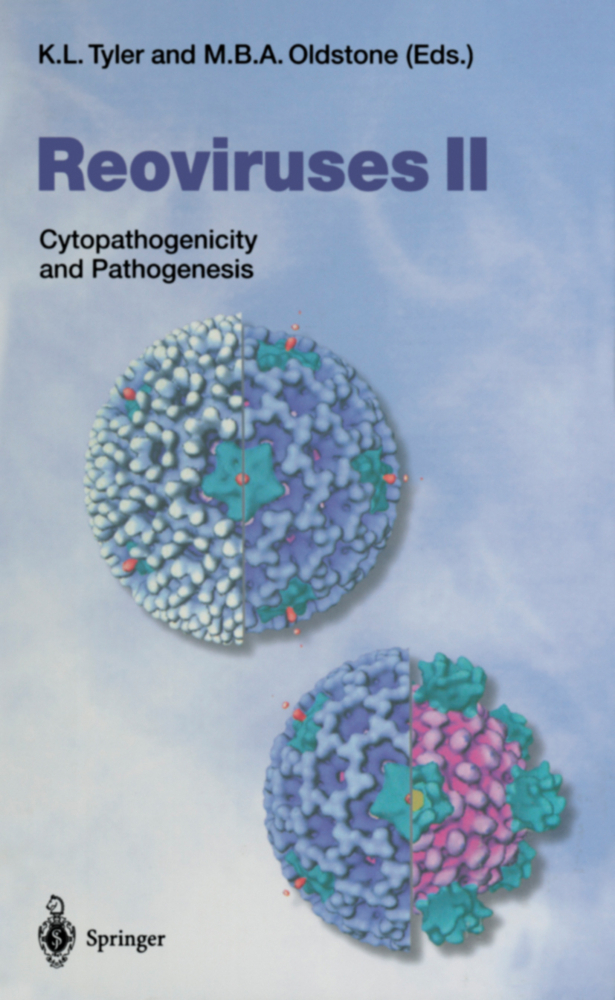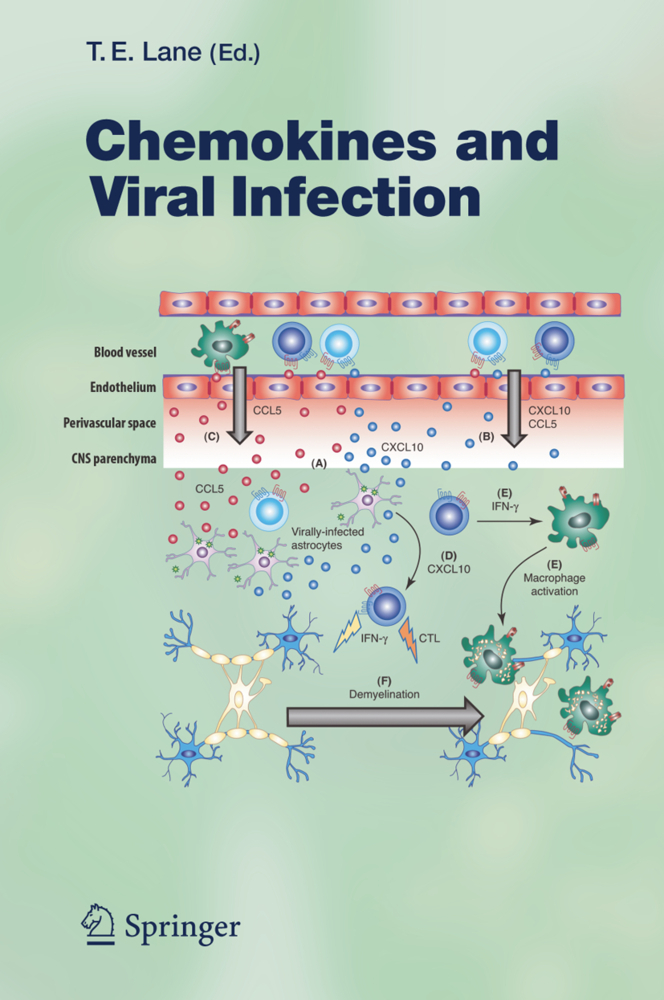TT Viruses
The Still Elusive Human Pathogens
Within a remarkably short period of time it became clear that TT viruses are widely spread globally, infect a large proportion of all human populations studied thus far and represent an extremely heterogeneous group of viruses, now labelled as Anelloviruses. TT virus-like infections have also been noted in various animal species. The classification of this virus group turns out to be difficult, their DNA contains between 2200 and 3800 nucleotides, related so-called TT-mini-viruses and a substantial proportion of intragenomic recombinants further complicate attempts to combine these viruses into a unifying phylogenetic concept. Although studied in many laboratories, the medically most interesting question of their possible pathogenic role in humans remains unanswered until today. It is not unreasonable to suspect that persistence of at least some specific TT virus genotypes may result in some infected individuals in a definable pathogenicity. We believe that this volume provides first hints in support of this view
1;Preface;5 2;Contents;7 3;List of Contributors;9 4;History of Discoveries and Pathogenicity of TT Viruses;11 4.1;History of Discoveries;12 4.2;Multiple Infections of Three Human Anelloviruses ( TTV, TTMDV, and TTMV) in Humans;17 4.3;Pathogenesis and Clinical Manifestations;20 4.4;Conclusions;24 4.5;References;25 5;Classification of TTV and Related Viruses ( Anelloviruses);31 5.1;Introduction;31 5.2;Identification of TTV and Related Viruses;32 5.3;Other Circular Single-Stranded DNA Viruses;35 5.4;Phylogenetic and Taxonomic Considerations;36 5.5;References;41 6;TT Viruses in Animals;45 6.1;Introduction;46 6.2;Methods of Isolating TTV in Animals;48 6.3;TTV in Nonhuman Primates;50 6.4;TTV in Nonprimate Animals;55 6.5;Conclusions;58 6.6;References;59 7;Replication of and Protein Synthesis by TT Viruses;63 7.1;Replication of TTV;63 7.2;Replication Mechanism;65 7.3;RNA Processing of TTV;66 7.4;Protein Expression of TTV;69 7.5;Functions of TTV Proteins;70 7.6;References;71 8;Immunobiology of the Torque Teno Viruses and Other Anelloviruses;75 8.1;Introduction;76 8.2;Innate Immunity;77 8.3;Adaptive Immune Responses;80 8.4;Concluding Remark;95 8.5;References;95 9;Intragenomic Rearrangement in TT Viruses: A Possible Role in the Pathogenesis of Disease;101 9.1;Introduction;102 9.2;Full-Length TT Viruses;103 9.3;Subviral TT Genomes;106 9.4;Putative Gene Functions;110 9.5;Conclusions;114 9.6;References;114 10;TT Viruses: Oncogenic or Tumor-Suppressive Properties?;119 10.1;Introduction;119 10.2;TT Virus Infections as Indirect Carcinogens?;120 10.3;Tumor-Suppressive Properties of TT Viruses;122 10.4;The Target Cell Conditioning Concept Revisited;123 10.5;Conclusions;124 10.6;References;124 11;Relationship of Torque Teno Virus to Chicken Anemia Virus;127 11.1;Torque Teno Virus;128 11.2;Chicken Anemia Virus;133 11.3;References;138 12;Apoptosis-Inducing Proteins in Chicken Anemia Virus and TT Virus;141 12.1;Introduction;142 12.2;Apoptin Specifically Induces Apoptosis in a Broad Range of Human Tumor Cells;143 12.3;Molecular Aspects of Apoptin-Induced Apoptosis;144 12.4;Apoptin-Related Proteins in TTV Population: A Flashback;148 12.5;The TTV-Derived ORF TAIP Induces Apoptosis in Human Tumor Cells;148 12.6;Various Forms of TAIP in the TTV Population;150 12.7;Diseases and Therapies;154 12.8;Conclusions;156 12.9;References;156 13;Chicken Anemia Virus;161 13.1;Introduction;162 13.2;Historical Background;163 13.3;Characterization of CAV and Virus Replication;164 13.4;Pathogenesis;177 13.5;Lessons for Anellovirus Infections;185 13.6;Conclusions;186 13.7;References;186 14;Geminiviruses;195 14.1;Introduction;196 14.2;Importance of Geminiviruses;196 14.3;Structure and Composition of Virions;198 14.4;Genome Structure and Evolution;201 14.5;Insect Transmission;206 14.6;Tissue Tropism;207 14.7;Replication, Recombination, and Repair;208 14.8;Transcription;214 14.9;Transport Within the Plant;218 14.10;Conclusions and Perspectives;225 14.11;References;226 15;Index;237
Villiers, Ethel-Michele de
Zur Hausen, Harald
| ISBN | 9783540709725 |
|---|---|
| Artikelnummer | 9783540709725 |
| Medientyp | E-Book - PDF |
| Auflage | 2. Aufl. |
| Copyrightjahr | 2008 |
| Verlag | Springer-Verlag |
| Umfang | 233 Seiten |
| Sprache | Englisch |
| Kopierschutz | Digitales Wasserzeichen |

